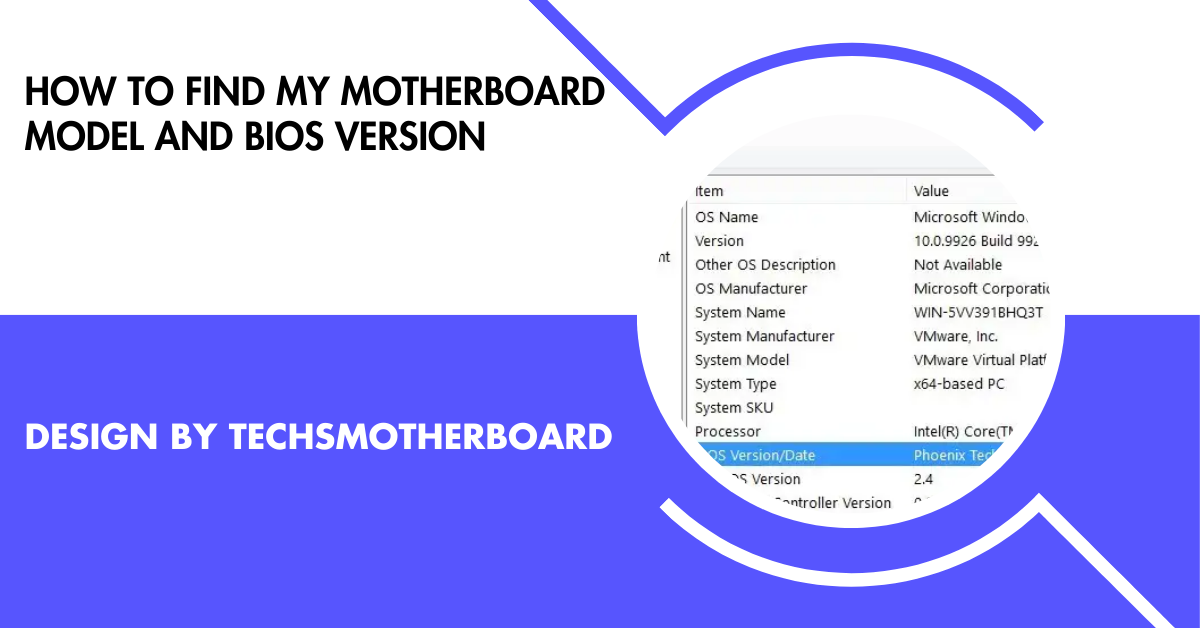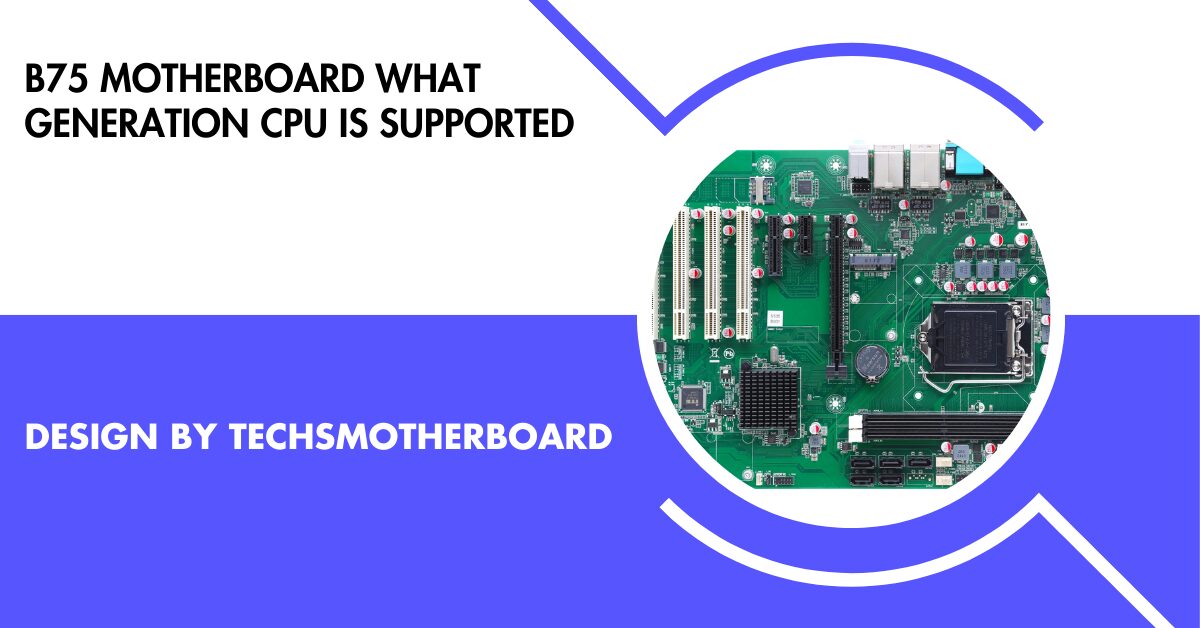Business
How Data-Driven Operations Are Transforming Factory Efficiency

Modern factories are navigating an era where efficiency, agility, and competitiveness hinge on the strategic use of data. The shift toward data-driven operations marks a turning point in industrial history, where intuition is replaced by quantifiable, actionable intelligence. Manufacturers are revolutionizing their operations by leveraging real-time insights and advanced analytics, moving beyond traditional decision-making methods to an environment where digital feedback guides every action. This significant evolution is mainly driven by innovations in manufacturing analytics software, which provides detailed, actionable intelligence that reaches every layer of the factory floor—from operators to executives.
Manufacturing analytics software allows organizations to monitor production in real-time, enabling swift adjustments and rectifying bottlenecks. This leads to increased throughput, reduced operational waste, and reduced downtime. Advanced platforms provide real-time guidance to operators and managers, resulting in reduced downtime, improved resource utilization, and long-term cost savings. Identifying patterns in manufacturing data enables proactive intervention, maintaining efficiency, and product quality. As global manufacturing environments become more complex, manual methods are insufficient. Advanced analytics tools empower staff to spot emerging trends or risks, enabling proactive management and better short-term reactions. Adopting data-centric approaches is essential for future-proofing operations and fostering efficiency, resilience, and long-term market leadership. Advanced analytics can drive significant improvements in operational performance, with some manufacturers reporting double-digit gains in productivity and profitability.
Real-Time Data Collection
Integrating IoT sensors, industrial machines, and connected edge devices has elevated real-time data collection to a cornerstone of modern smart manufacturing. Factories worldwide are now equipped to monitor equipment status, production rates, environmental conditions, and energy consumption—every moment, every machine. This seamless and comprehensive flow of information provides instant visibility into operations, alerting teams to emerging issues, inefficiencies, or unsafe conditions long before they develop into significant problems. The massive amount of granular, time-stamped data generated across the factory floor forms the bedrock for ongoing analysis and lasting improvements.
Operators use intuitive dashboards to monitor key performance indicators (KPIs), quickly identifying deviations from established benchmarks or quality targets. These systems can be programmed to deliver instant alerts via mobile devices or visual cues on control panels, reducing response time and minimizing potential disruptions. With this immediate feedback, managers and engineers are empowered to fine-tune processes in real time, foster cross-functional collaboration, and nurture a culture of agility and operational excellence that sets leading manufacturers apart.
Predictive Maintenance
Predictive maintenance represents a paradigm shift from traditional maintenance models. It leverages historical and real-time data to forecast when assets will require service or are at risk of failure. Sophisticated algorithms analyze patterns in machine vibration, temperature, cycle counts, and run-time hours, which allows maintenance teams to intervene before breakdowns happen. This proactive approach to maintenance has profound implications: factories deploying predictive strategies report unplanned downtime reductions exceeding 70% and emergency repair savings surpassing 65%. Such improvements can dramatically impact profitability, safety, and workforce productivity.
With fewer unexpected equipment failures, factories can schedule maintenance during planned downtimes, reducing production interruptions and maximizing the lifespan of valuable assets. By moving from a reactive to a predictive maintenance schedule, manufacturers also optimize workforce allocation and spare parts inventory, resulting in lower overall costs, improved compliance with safety standards, and a workforce better prepared to support long-term operational excellence.
Process Optimization
Data analytics play a transformative role in optimizing the production process. Manufacturers pinpoint bottlenecks and inefficiencies in equipment utilization, manual labor steps, and material handling by collecting and analyzing granular workflow data in near real time. Sophisticated process mapping, powered by analytics, allows leaders to visualize the path of materials and products flowing through the factory, identifying exactly where slowdowns or excess waste occur. Refined insight enables operations leaders to reconfigure workflows, optimize work cell arrangements, and tailor resource deployment for maximum efficiency.
Continuous improvement initiatives built on accurate analytics drive leaner, more productive factories by uncovering root causes behind issues and enabling teams to implement targeted corrective actions. Over time, the cumulative effect of these incremental changes results in exponential gains—from reduced cycle times to lower defect rates—empowering teams and organizations to react with agility to changing customer needs and market dynamics.
Quality Control
Combining machine learning algorithms with advanced visual and sensor-based inspections elevates quality control to new standards. These intelligent systems automatically scan for product defects, dimensional variances, or process anomalies far beyond the detection capabilities of the human eye, providing real-time feedback that helps operators immediately identify and resolve problems. Deep learning models enable these systems to “learn” from each detected issue and continuously improve their accuracy and effectiveness over time.
Notably, advanced, data-driven quality checkpoints implemented within automated frameworks have increased inspection accuracy rates to 99% or above. This high level of precision dramatically reduces waste, minimizes rework, and drives up first-pass yield, directly improving the overall efficiency of the production process. As a result, manufacturers benefit from fewer customer complaints, higher satisfaction, and a stronger competitive reputation in their markets.
Supply Chain Management
Effective supply chain management increasingly depends on the continuous flow of timely, rich, and comprehensive data. Manufacturers achieve an agile, end-to-end view of their entire network by integrating information from suppliers, logistics networks, and inventory management systems. Predictive analytics improve demand forecasting, optimize stock levels, and help respond more quickly to real-time market or supply disruptions. This integrated, data-driven approach translates into shorter order cycles, reduced excess inventory, and more accurate production scheduling, which minimizes costs and increases responsiveness to customer needs. McKinsey & Company illustrates how big data revolutionizes global supply chains, reduces risk, and unlocks unprecedented value.
Energy Efficiency
Operational data is essential in identifying patterns of excessive energy usage and pinpointing opportunities for sustainable improvements. Factories can now track and analyze energy consumption by individual machines, production lines, or facility areas, revealing new possibilities to conserve resources and reduce utility costs. By instituting data-driven adjustments—such as variable speed drives, automated lighting, or optimized heating and cooling schedules—manufacturers have reported significant reductions in energy outlay, supporting operational savings and furthering corporate environmental objectives. Regular usage benchmarking and continuous monitoring ensure ongoing accountability, keeping energy efficiency strategies tightly aligned with evolving production demands, regulatory pressures, and sustainability commitments.
Challenges and Solutions
While the transition to data-driven operations offers undeniable benefits, manufacturers frequently face significant challenges. These include data integration across legacy systems, cybersecurity threats, and employee skill shortages. Implementing effective solutions requires a robust data infrastructure, a dedication to strong cybersecurity standards, and continual workforce upskilling. Forward-thinking organizations invest in cross-functional teams and scalable, cloud-based data platforms, ensuring every stakeholder—from line operators to engineers and executives—has secure access to timely insights whenever and wherever needed. Through this holistic approach, companies build resilience to future disruptions and position themselves to capitalize on new opportunities.
Future Trends
The future of factory operations is being shaped by the convergence of artificial intelligence, digital twins, and autonomous robotic systems. Artificial intelligence powers smarter, adaptive automation, predictive analytics, and real-time production scheduling. Meanwhile, adopting digital twins—a dynamic, virtual representation of physical assets and systems—offers breakthrough capabilities for simulating, optimizing, and controlling performance with unmatched accuracy. As autonomous factories and adaptive supply chains become a reality, these emerging technologies promise to drive greater efficiency, flexibility, and responsiveness.
Adopting a robust data-driven strategy is essential for survival and success in an industry where every second counts. Factories that integrate advanced analytics into their operations are best positioned to increase efficiency, lower costs, adapt to shifting market demands, and outperform the competition in a rapidly evolving global marketplace.
Business
From ‘For Sale’ to ‘Sold’: A Live Timeline of Home Transactions

Selling a home is a journey with clearly defined stages, but each step can come with both excitement and uncertainty. By understanding what’s coming next, sellers can set realistic expectations, minimize surprises, and confidently navigate the process. For those entering the vibrant local market, partnering with West Hartford CT real estate agents The Connecticut Agency LLC can provide valued expertise and supportive guidance from the very beginning.
Homeowners embarking on a sale often find that having a strategic approach eases their transition and can maximize their returns. Clear planning, effective communication, and knowing when to seek professional help are foundational to a stress-free experience. As you move from preparing your home to closing the deal, each phase brings distinct actions and opportunities to enhance your success.
This comprehensive guide breaks down the live timeline of home transactions, arming sellers with the knowledge to make informed decisions at each milestone.
Whether you’re selling your house for the first time or are a seasoned mover, understanding this process is essential to getting from “for sale” to “sold” smoothly.

Preparing the Home for Sale
Presentation is one of the most powerful tools a seller can use. Begin by decluttering every space, making necessary repairs, and adding curb appeal. A home that’s clean, neutral, and well-cared-for will stand out in photos and in person. Minor upgrades, such as a fresh coat of paint, updated lighting, or landscaping, can also deliver a strong first impression to potential buyers.
Professional staging services are also an option, allowing your home to be showcased at its very best. According to the National Association of Realtors, 82% of buyer’s agents said staging made it easier for their clients to visualize their prospective home, often resulting in faster and higher offers.
Listing the Property
With your home ready to shine, it’s time to list it on the market. Determining the right asking price is critical—a property priced too high can linger, while one too low might leave money on the table. A market analysis with input from a skilled agent ensures your price is both competitive and realistic. High-resolution photography and a compelling, honest description of the home’s features and benefits help capture interest and set your listing apart.
Partnering with a local real estate expert means leveraging deep market knowledge, effective negotiation skills, and professional marketing resources that may not be accessible to homeowners alone.
Marketing and Showings
Exposure is key to generating interest and offers. A combination of online listings, social media campaigns, email marketing, open houses, and signage draws attention to your property. Scheduling private showings allows prospective buyers to explore the home, ask questions, and envision how it fits their needs.
Flexibility during this phase is crucial—accommodating last-minute showing requests or weekend open houses ensures you don’t miss motivated buyers. Regular communication with your agent can also help you adapt marketing strategies as needed to maximize traffic.
Receiving and Negotiating Offers
With interest established, offers may begin to arrive. Each offer will contain specifics on price, conditions, closing dates, and other terms. Evaluate all the details, not just the dollar amount—sometimes a slightly lower offer with fewer contingencies or a faster closing can be the best choice. Negotiations often follow, involving counteroffers and clarifications. Successful negotiations typically require collaboration and realistic expectations from both sides, aiming for a win-win situation and a swift agreement.
Under Contract and Due Diligence
After an offer is accepted, the property moves into the “under contract” stage. This is when buyers do their due diligence, which may include home inspections, appraisals, and securing financing. Inspections can uncover issues leading to further negotiations or repair requests. The appraisal confirms the property’s value for the lender; if it comes in lower than the agreed price, renegotiation may be required. Staying responsive and flexible throughout this phase can prevent delays and complications.
Closing the Sale
The closing process finalizes the transaction. During this period, both parties review and sign numerous documents, title searches are conducted, and funds are transferred. Common participants include real estate agents, attorneys, title companies, and lenders. Ensuring all contingencies are satisfied—and being prepared to quickly resolve last-minute issues—will help you reach this goal. On the day the keys are handed over, your home is officially sold.
Business
From On-Prem to Cloud: How SASE Simplifies Security for Hybrid and Remote Workforces
A Shift in the Modern Workforce
The dramatic evolution of work environments in recent years has pushed organizations to adapt to new modes of operation rapidly. With remote and hybrid work models moving from an emergency solution to a long-term strategy, IT teams face increasing pressure to deliver secure access to data and applications across varied locations and devices. SASE network security has emerged as a leading solution, enabling organizations to address these challenges with a unified, cloud-first approach that follows the user, wherever work occurs.
As many organizations embrace flexible work arrangements, the traditional boundaries of the enterprise network have all but vanished. Employees tap into corporate resources from home offices, coworking spaces, and on the go—often relying on personal devices or insecure connections. This paradigm shift has compelled organizations to reassess their approach to protecting critical assets and controlling user access beyond the confines of an office, making holistic security more crucial than ever.
Traditional Security Models Struggle to Keep Pace
Classic perimeter-based security solutions, such as firewalls, VPNs, and network access controls, were designed for centralized office environments. As workforces grow more distributed, these tools become increasingly ineffective. Data flowing far outside company walls and traffic between cloud applications all challenge the effectiveness of on-premises security architectures. VPN solutions, once a mainstay of remote work, now struggle under demanding workloads, offer inconsistent user experiences, and introduce vulnerabilities when not well managed. According to an analysis by CSO Online, companies relying solely on traditional defenses face higher risks of data breaches and limited visibility over their environments.
What Makes SASE Different?
Secure Access Service Edge (SASE) fundamentally reimagines security and networking for today’s needs. By unifying advanced networking functions, such as SD-WAN, with cloud-delivered security, including firewall-as-a-service, secure web gateways, and zero-trust network access, SASE creates a holistic defense perimeter anchored in the cloud. Security policies and access controls are not limited by physical location, but rather by context, including user identity, device security posture, and real-time risk assessment. This enables organizations to provide secure, optimized access to resources, regardless of where employees or workloads reside.
Simplified Access and Security for Every User
Zero trust is at the core of the SASE model. Instead of inherently trusting devices or users simply because they connect from inside the network, SASE evaluates each interaction. This principle is especially effective for organizations with employees moving between multiple environments. Every application request is fully authenticated and authorized before access is granted. It ensures consistent enforcement of security policies, regardless of whether an employee is connecting from the corporate office, a hotel room, or a coffee shop. Workflows remain seamless, user experiences remain fast and reliable, and sensitive data stays protected everywhere.
Real-World Benefits of SASE for Hybrid Teams
Adopting a SASE framework yields tangible results for organizations managing hybrid and remote workforces. Companies report increased visibility into user activity and network traffic, which enhances their ability to track threats and respond to incidents swiftly. Policy management becomes far simpler, as security and networking configurations are handled through a single, central dashboard—allowing global rule enforcement and streamlined auditing. The risk of exposure to new vulnerabilities is minimized through ongoing threat intelligence updates, patch management, and automated response capabilities. Gartner research has highlighted that SASE helps IT teams deliver improved cloud application performance—critical for productivity when access happens from virtually anywhere.

Streamlining Compliance and Reducing Overhead
SASE simplifies compliance for organizations facing evolving regulatory landscapes. Instead of juggling multiple point solutions for data loss prevention, firewall management, and identity protection, IT teams can implement and prove controls from a consolidated interface. This unified foundation makes tasks like policy enforcement, user auditing, and evidence collection easier and less time-intensive, which in turn reduces the risk of fines and helps demonstrate ongoing regulatory compliance in sectors like healthcare, finance, and retail.
Key Features to Consider When Evaluating SASE Solutions
- Integrated Security: Choose platforms that offer robust threat protection, data loss prevention, and secure web gateways in a single solution.
- Scalability: Prioritize cloud-native architectures that dynamically adjust to your organization’s changing needs—supporting small teams or thousands of new endpoints efficiently.
- Zero Trust Support: Ensure the solution implements strict authentication and granular access controls based on real-time user and device context.
- Performance Optimization: Look for global presence, intelligent routing, and bandwidth management that keep cloud applications responsive for all users.
- Centralized Visibility: A single-pane-of-glass dashboard should deliver clear insight into all traffic and security events, simplifying monitoring and remediation efforts.
Steps to Get Started with SASE
- Assess Your Current Architecture:Catalog legacy systems, workflow gaps, and security pain points in your existing environment.
- Define Your Security Policies:Document clear, risk-based guidelines for application access, device trust levels, and incident response procedures.
- Choose the Right Partner: Select SASE vendors that align with your security standards, offer proven performance, and deliver responsive support.
- Pilot and Expand: Launch an initial rollout with a group of users, gauge outcomes, and systematically scale implementation based on feedback and results.
The Future of Secure Access for Distributed Workforces
The transition from on-premises security to cloud-first models is rapidly accelerating. SASE not only meets the current needs of hybrid and remote workforces but also positions organizations to stay ahead of future threats. By providing secure, agile, and scalable access to organizational resources—regardless of location—businesses can embrace new ways of working while safeguarding their critical data. As hybrid work establishes itself in the business landscape, rethinking security through the lens of cloud-based SASE solutions is becoming a crucial competitive advantage.
Business
The Benefits of Working With a Wealth Planner for Long-Term Success

Financial planning services help individuals and business owners effectively manage their assets throughout their lifetime. An experienced financial planner assesses your current financial situation to determine investment strategies that align with your goals. Here are some benefits of working with a wealth planner for long-term success:
Investment Management
Professional planners help affluent individuals and companies invest in the right sectors by reviewing market trends and investment opportunities. They can advise you on where to allocate your funds, including stocks, bonds, or real estate, to help increase your assets. As markets change, a wealth planner reviews your portfolio to determine whether it matches your goals. These experts can adjust your holdings by suggesting you sell or buy stocks based on your risk tolerance. If you want to build an education fund or preserve your capital, financial advisors work with you to manage risks while maximizing profit.
Tax Planning
With higher incomes and complex investment portfolios, tax laws often become more challenging to navigate. Wealth planners help identify areas where taxes may be minimized, such as through charitable giving for individuals and families. If you own a business, an advisor can help you choose the right structure, such as a limited liability company, which offers tax advantages. Placing your assets in the right accounts helps reduce your tax liability each year and grow your wealth over time. If you’re planning to sell your business or pass it on, a professional can establish a trust to streamline the transfer and minimize fees.
Estate and Trust Planning
Once you’ve generated significant wealth, financial planning services help protect what you’ve built and pass it on to the next generations. Some key estate planning options include:
- Trusts: If you own a business and other assets, trusts can safeguard them from taxes, lawsuits, and creditors who would otherwise deplete your wealth.
- Wills: With the right estate plan, transferring wealth to your loved ones often results in fewer disputes and losses. It helps determine who receives what, when, and how, according to your wishes, once you pass away.
- Charitable giving: Financial planners also help you support local organizations through charitable trusts, foundations, or donations.
Retirement Income Planning
Whether you have investment accounts, pensions, or savings, a wealth manager helps you plan your retirement income. They review these assets to create a financial plan that aligns with your lifestyle and maximizes your financial returns. To keep the money working for you, wealth planners suggest withdrawing or investing in accounts at specific times to maximize revenue.
A cash flow analysis helps financial advisors understand your monthly expenses and your income sources. This allows them to recommend a suitable savings plan or investment opportunities. When claiming benefits from Social Security and pensions, they provide information about beneficial times to begin receiving payments.
Get Started With Financial Planning Services
A wealth planner helps you prepare for retirement, allocate funds well, and manage different risks. To protect your assets and distribute them when the time comes, these professionals create several legal documents. If you’re looking to manage your wealth, call a trusted company today to learn more about their financial planning services.
-

 Tech6 months ago
Tech6 months agoSotwe STW Explained How a Radical Platform is Redefining Online Expression
-

 Entertainment8 months ago
Entertainment8 months agoHow Do I Turn On the Beatbot?
-

 Motherboard Guide1 year ago
Motherboard Guide1 year agoAre B750 Motherboard A Good Choice – A Complete Overview!
-

 Blog1 year ago
Blog1 year agoHow To Find My Motherboard Model And Bios Version – A Detailed Overview!
-

 Motherboard Guide1 year ago
Motherboard Guide1 year agoAre Gigabyte Motherboards Good – A Comprehensive Review!
-

 Blog3 months ago
Blog3 months agoHer Love Is A Kind Of Charity Password – The Hidden Meaning Behind the Phrase!
-

 Motherboard Guide12 months ago
Motherboard Guide12 months agoB75 Motherboard What Generation Cpu Is Supported – B75 Motherboard Cpu Support!
-
Motherboard Guide4 months ago
The Ultimate Croatia Travel Guide for First-Timers: Everything You Need to Know Before You Go

